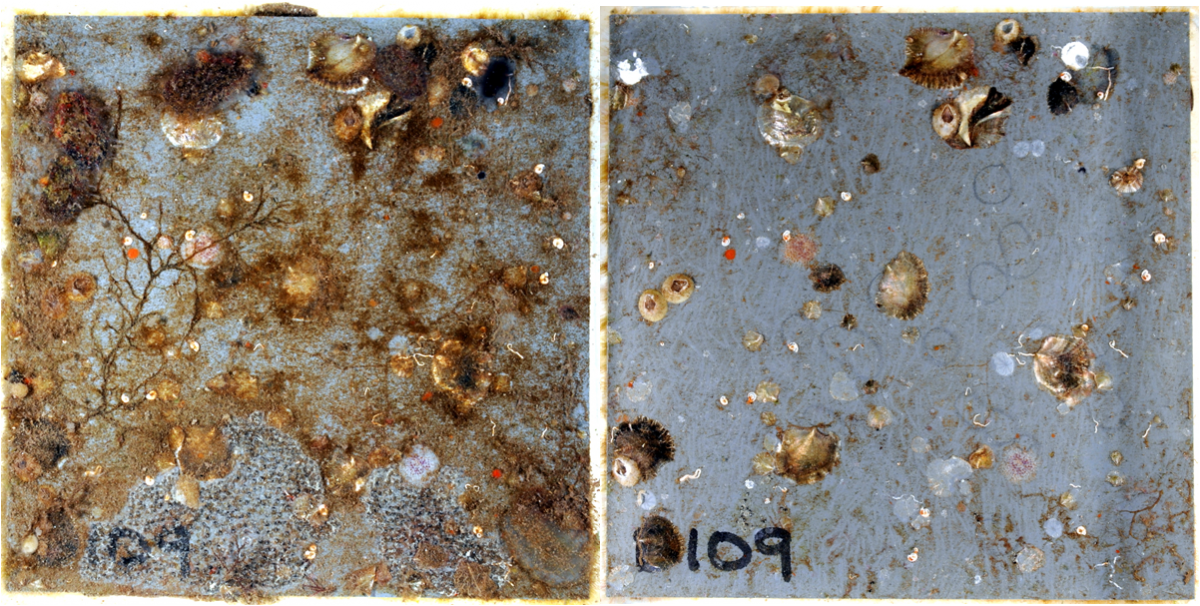Research ProjectPredation and Competition
Biogeographic patterns of biotic resistance
Affiliated Labs
Project Goal
We are examining predation and competition rates in fouling communities on the Atlantic and Pacific coasts to determine if tropical communities resist invasion to a greater extent than temperate communities.
Description
Native species can prevent non-native species from establishing through predation* and competition*. By doing so, native communities exert what is known as biotic resistance*. Can biotic resistance (or the lack thereof) explain broad scale patterns of invasion? Perhaps, the tropics appear to have few non-native species. Biotic resistance in the tropics may therefore prevent non-native species from establishing because newcomers are preyed upon or are unable to compete. In contrast, non-native species are abundant in the temperate zone* (e.g. the north eastern coast of the US), which appears to have weaker biotic resistance.
Researchers at SERC are collaborating with scientists at the Smithsonian Tropical Research Institution (STRI) in Panama and at Temple University to address the question of invasion from the tropics to the temperate zone, and taking advantage of MarineGEO, a network of Smithsonian marine laboratories. For this research, we are conducting field experiments that assess the importance of predation and competition in preventing the establishment of non-native species. This work is being conducted along the Atlantic and Pacific coasts of North and Central America in marine fouling communities*. Fouling species are suitable for this study because they represent a large fraction of the non-native species that have become established and because they are easy to manipulate. Ultimately, this research will help clarify the importance of native biodiversity in providing resistance to invasion.

Feature Stories
The diversity of the tropics helps keep invasive species low. By Monaca Noble and Amy Freestone. June 2013
Publications
Jurgens, L. J., Freestone, Amy L., Ruiz, Gregory M. and Torchin, Mark E. 2017. Prior predation alters community resistance to an extreme climate disturbance. Ecosphere, 8 (10) http://dx.doi.org/10.1002/ecs2.1986
Cheng, Brian S., Lisa M. Komoroske, Edwin D. Grosholz. 2016. Trophic sensitivity of invasive predator and native prey interactions: integrating environmental context and climate change. Functional Ecology Online. doi:10.1111/1365-2435.12759
Freestone, Amy L., Ruiz, Gregory M. and Torchin, Mark E. 2013. Stronger biotic resistance in tropics relative to temperate zone: effects of predation on marine invasion dynamics. Ecology, 94(6): 1370-1377. doi:10.1890/12-1382.1
Kimbro, D. L., B. S. Cheng, and E. D. Grosholz. 2013. Biotic resistance in marine environments. Ecology Letters 16:821-833.
Freestone, A. L., R. W. Osman, G. M. Ruiz, and M. E. Torchin. 2011. Stronger predation in the tropics shapes species richness patterns in marine communities. Ecology 92:983-993.
Contact
*Glossary
| Term | Definition |
|---|---|
| Predation | The act of one animal consuming or preying upon another. |
| Competition | A contest between two organisms that seek a resource that cannot be shared |
| Biotic resistance | The ability of a native community to suppress non-native species, often through predation and/or competition. |
| Fouling communites | Marine animals and plants that commonly live on hard substrate (e.g. ships, docks, and rocks), often near or within estuaries. They are termed 'fouling species' because they can be a nuisance to boaters and dock owners. Fouling communities often possess many non-native species. |





